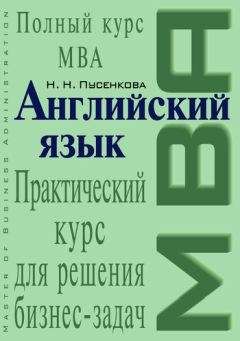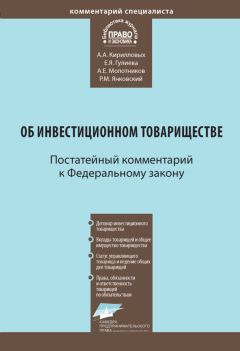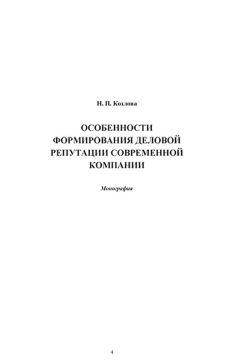Ознакомительная версия.
Источник: http://www.commersant-pravo.ru/offshore4
Lesson 39
Making Presentations
Read and translate the following text.
The Art of Making Sales Presentations
How to sell what you present and to present what you sell…
A profitable sale of an excellent product and a happy Customer are important ingredients of corporate success. To close a sale, it is necessary to understand your Customer and your product, and to know how to present a product. For that, you have to master the art of sales presentations.
Mike Adams, GeoQuest Business Development Manager, and former Marketing Manager, shares his secrets of a successful presentation – Schlumberger style.
R.P.: Where can you learn to make presentations?
M.A.: Schlumberger organizes two-day courses where people study theory and practice of presentations. Then their own presentations are videotaped and discussed.
R.P.: What is the key to Schlumberger sales presentations?
M.A.: First – do not be very technical. Second – enthusiasm, enthusiasm, and nothing but enthusiasm.
You have to understand psychology of the audience. Don’t say «I»; use «you» to show that you think about your Customer rather than yourself. Integration with the audience is useful when you indicate that you are one of the guys: you also know what it is like to freeze in Siberia in winter.
You use your voice to make points and body language to communicate your message to the audience. Voice is a highlighter: do not speak at the same speed and without pauses. Eye contact is essential to scan people in the room. It leads to the art of mirroring when you react to the mental state of the audience. If they show interest – slow down and give more details, if they are getting bored – say something dramatic to wake them up.
You tell the audience what you are going to say, say it, and at the end repeat what you’ve just said.
R.P.: How do you attract your audience’s attention?
M.A.: You use a grabber. It can be a word play (you explain the difference a Schlumberger product will make) or a number play. You can tell stories: people will remember them when they forget everything else about a presentation. A whole presentation could be built around a story: how a company lost all geological data on an oil field because it did not have a data management system. Props will make your presentation more visual. Once, a presenter wanted to illustrate enhanced oil recovery: he opened a can of beer, and said «imagine that this beer can is your reservoir, and you could only produce this much (drinks about a 1/3 of the can) – does it make sense to leave so much oil in the ground?»
Dramas are very effective. During a presentation in Sochi at the GeoQuest International Forum, there were 6 people on the stage impersonating oil company’s professionals, from geologists to economists. They demonstrated how this team worked on a project with the help of specialised software.
R.P.: And what is the best way to close your presentation?
M.A. The close of sales presentation is crucial, because you want them to say «yes». You emphasise that your product is unique, relevant and focused on the Customer’s needs. And then you ask the audience: «What do you think?» You pause for as long as it takes them to answer you. You need to get public positive feedback. Be innocent, curious, open – and listen. If they say «I like it» then time comes for a call for action, i.e. where do we go from here?
R.P.: You describe preparation of a presentation as a very creative process. What else is needed to make it successful?
M.A.: In addition to creativity, you need some basic economics. You sell a product at a certain price, but costs for the Customer are higher, because there are expenses of its installation, training of personnel, and so on. The Customer buys a product only if its value is greater than its cost. You cannot do much about the price. So, you have to increase value for the Customer and do it during presentation. You can describe different types of value, that is business, financial and personal (image). You can remind that cost comes only once, at the beginning, and value will stay for a long time. Many presentations fail because presenters are unable to show value.
R.P.: What about questions and objections?
M.A.: The number of questions indicates success of your presentation. Do not be afraid of objections: they mean that the Customer is interested. To deal with them you use reframing. Usually, people object that the price of Schlumberger product is too high. You restate the objection: «Do you really think the price is too high?» without getting on the defensive and explain pitfalls of false economy – would you like to fly in a plane with inferior but cheap landing gear?
R.P.: Do you use slides during presentation?
M.A.: Not if I can avoid it. Presenters often use presentation software as a crutch – a flipchart is better because an audience likes to watch you draw and write. Make PowerPoint slides only when you cannot do without them. They must be brief – do not put more words on them than you can put on your T-shirt.
And remember, your presentation will succeed only if you truly believe that you have an excellent product to sell (and you do have!)
Source: Russian Panorama (Schlumberger Quarterly Magazine)
Lesson 40
Financial Statements
Study the following financial statements of an oil major and learn terms from the Essential Vocabulary.
Report of Independent Registered Public Accounting Firm on Consolidated Financial Statements
The Board of Directors and Stockholders
We have audited the accompanying consolidated balance sheets of XYZ Company as of December 31, 2007 and 2006, and the related consolidated statements of income, changes in common stockholders’ equity, and cash flows for each of the three years in the period ended December 31, 2007. These financial statements are the responsibility of the Company’s management. Our responsibility is to express an opinion on these financial statements based on our audits. We conducted our audits in accordance with the standards of the Public Company Accounting Oversight Board (United States). Those standards require that we plan and perform the audit to obtain reasonable assurance about whether the financial statements are free of material misstatement. An audit includes examining, on a test basis, evidence supporting the amounts and disclosures in the financial statements. An audit also includes assessing the accounting principles used and significant estimates made by management, as well as evaluating the overall financial statement presentation.
We believe that our audits provide a reasonable basis for our opinion. In our opinion, the financial statements referred to above present fairly, in all material respects, the consolidated financial position of XYZ Company at December 31, 2007 and 2006, and the consolidated results of its operations and its cash flows for each of the three years in the period ended December 31, 2007, in conformity with U.S. generally accepted accounting principles.
We also have audited, in accordance with the standards of the Public Company Accounting Oversight Board (United States), the effectiveness of XYZ company internal control over financial reporting as of December 31, 2007, based on criteria established in Internal Control – Integrated Framework issued by the Committee of Sponsoring Organizations of the Treadway Commission and our report dated February 26, 2008 expressed an unqualified opinion thereon.
Auditor.
I. Consolidated Income Statement XYZ company
II. Consolidated Balance Sheet XYZ company
III. Consolidated Statement of Cash Flows XYZ Company
IV. Consolidated Statement of Changes in Common Stockholders’ Equity XYZ company
1. statement of changes in common stockholders’ equity – отчет о движении капитала акционеров за год
2. material a – зд. существенный
3. depreciation, depletion, amortization (DDA) – амортизация материальных и нематериальных активов и истощение недр
depletion n – истощение, исчерпывание
deplete v – истощать, исчерпывать
depleted a – истощенный
4. impairment n – обесценение, снижение стоимости
impair v – обесценивать, снижать стоимость, ухудшать
5. accretion n – прирост, приращение, увеличение
6. minority interest – доля меньшинства
7. cash equivalents – денежные эквиваленты
8. prepaid expense – расходы будущих периодов (заранее оплаченные расходы)
9. authorized shares – уставный капитал
10. capital in excess of par – дополнительный капитал, превышающий номинальный
11. reconciliation (reconcilement) n – урегулирование, приведение в соответствие, согласование
reconcile v– урегулировать, приводить в соответствие, согласовывать
12. dry hole costs – затраты на безуспешные геологоразведочные работы
13. advance n – аванс
14. foreign currency translation – пересчет суммы из одной валюты в другую
Exercise 1. Translate into English.
Заключение независимых аудиторов Совету директоров ОАО АВС
Мы провели аудит прилагаемого неконсолидированного бухгалтерского баланса ОАО АВС (далее Компания) по состоянию на 31 декабря 2007 г. и соответствующих неконсолидированных отчетов о прибылях и убытках, отчета о движении капитала и отчета о движении денежных средств за 2007 г. Ответственность за подготовку данной неконсолидированной финансовой отчетности несет руководство Компании. Наша ответственность заключается в выражении мнения относительно данной финансовой отчетности на основе проведенного аудита.
Мы проводили аудит в соответствии с Международными стандартами аудита. Согласно требованиям данных стандартов аудит планировался и проводился таким образом, чтобы получить разумную уверенность в том, что финансовая отчетность не содержит существенных искажений. Аудит включает проверку на выборочной основе подтверждений числовых данных и раскрытий, содержащихся в финансовой отчетности.
Кроме того, аудит включает анализ использованных принципов бухгалтерского учета и важнейших допущений, сделанных руководством, а также оценку представления финансовой отчетности в целом. Мы полагаем, что проведенный нами аудит дает достаточные основания для выражения нашего мнения.
По нашему мнению, данная неконсолидированная финансовая отчетность достоверно отражает во всех существенных отношениях неконсолидированное финансовое положение Компании по состоянию на 31 декабря 2007 г., неконсолидированные результаты ее деятельности и движение денежных средств за 2007 г. в соответствии с Международными стандартами финансовой отчетности.
I. Бухгалтерский баланс компании АВС на 31 декабря 2007 г. (млн российских рублей)
II. Отчет о прибылях и убытках за год, закончившийся 31 декабря 2007 г. (млн российских рублей)
III. Отчет о движении денежных средств за год, закончившийся 31 декабря 2007 г. (млн российских рублей)
IV. Отчет о движении капитала акционеров за год, закончившийся 31 декабря 2007 г. (млн российских рублей)
Exercise 5.levers, workforce, performance, command-and-control, delivers, environment, decision-making, delegation of authority, salary, fringe benefits, remuneration, driver, gain, adhere, assumption, job satisfaction, hygiene, extrinsic, challenging, rewards, value, needs
Ознакомительная версия.





